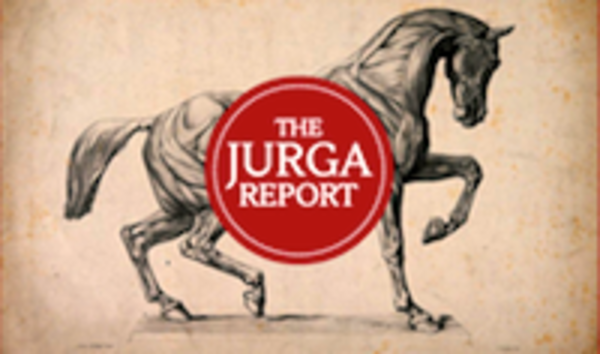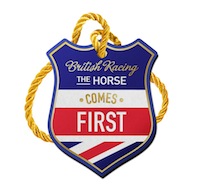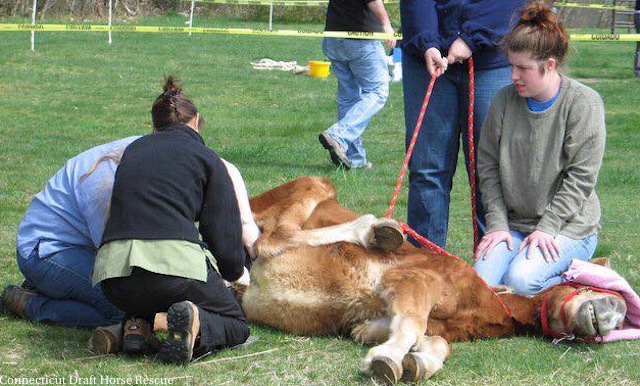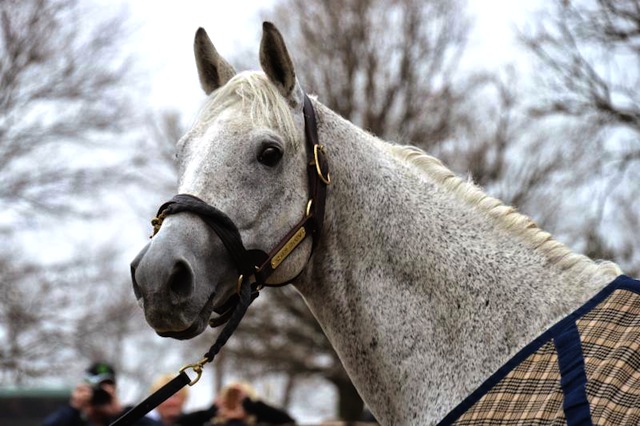
It happens every year. Of course I’m talking about the Kentucky Derby, America’s most famous and much-loved horse race. The first Saturday of May rolls around and Americans remember that horse racing is fun to watch on television. That jockeys are great athletes. That people will show up in public in silly hats. And that horses can be heroes.
But that first Saturday in May also spawns something else. Call it a perfect storm of news stories–both planned and unplanned–that strive to use the Derby as a punctuation mark. These stories compete to become the red piece of yarn tied to the Derby’s high-flying coat tails during this one week of the year when the public’s mind turns to horses.

Opponents and critics of horse racing will throw bricks and bats in the direction of Louisville this week, hoping the noise they make will resonate with some editor, somewhere, so their story will land on a front page or the evening news. Racehorse advocacy groups will lobby NBC Sports for a mention during Saturday’s broadcast.
So while all eyes are on Louisville, let’s go a little further afield and see what the rest of the horse world offers as flip sides to the Run for the Roses coin. Could the inclusion of these stories put the Kentucky Derby in a more meaningful context?
What stories would you add to NBC’s coverage of the Kentucky Derby to round out the once-a-year coverage of horse racing–and horses–in America?
The Horse Comes First
Yes, racing has its critics. They race horses when they’re too young, we’re told. They pump them full of drugs, we hear. Racing is corrupt and cruel, they say.
American racing interests have a bad habit of letting sleeping dogs lie until news stories erupt, like PETA’s undercover videotapes from the backstretch or the on-air breakdown of a horse. What follows every crisis is a circling of the protect-racing wagons to protest the charges. We hear heartfelt testimonials from all corners about how loved the horses are.

But the horses have left the gate, as the saying goes, and the earnest responses never receive the publicity they need. The breaking story gets all the ears and eyes and influence.
British horseracing, meanwhile, has taken a different approach, by being pro-active about all that is going on there to protect and encourage and improve the care of racehorses. “The Horse Comes First” is a public relations and advocacy campaign put in place to answer questions, and to be a first line of defense in the event of attack.
The campaign began in December, with this simple, wordless video extolling facts and figures about the sport:
Racing Future
Meets Itshoweeroll. This Kentucky-bred racehorse ended up in a feedlot, destined for slaughter, when his former owners in Canada tracked him down and brought him home. Racing Future, a Canadian organization concerned with the future of the sport in Canada, put together a video showing the efforts of veterinarians–and their technology–to stabilize the emaciated horse, fix his bite, and determine the extent of his leg injuries.
You can read so much about the veterinary technology in use at the track, but this video shows how some of the same technology can be used at the other end of the horse’s life: to save it.
Castration Complex
We’ll hear a lot of talk during the Derby coverage about the potential value of these colts as studs, should they achieve a Triple Crown win, a Derby win, or even a good showing. We’ll hear about their sires, like Big Brown and Malibu Moon, and which ones carry the lines of Mr Prospector, Storm Cat, Secretariat, or Northern Dancer.
NBC will make the breeding game sound high tech, lucrative, and (obviously) sexy in a glamorous way. There will be stallions with that “look of eagles”, panoramas of rolling Kentucky meadows with white board fences, mares and foals basking in the spring sunshine and a few shots of yearlings bringing seven-figure bids at the Keeneland sale.

Meanwhile, the Unwanted Horse Coalition would like you to geld your colt. And if you can’t afford it, they’ll help finance the surgery through horse rescue charities allied with UHC’s Operation Gelding fund. Funds from American Association of Equine Practitioners, the American Veterinary Medical Association, the Professional Rodeo Cowboys Association, the American Quarter Horse Association, and the Masters of Foxhounds Association make the program possible.
The Connecticut Draft Horse Rescue is possibly as far as you can get from the Kentucky Derby. The recovering and rehomed Belgians and Clydesdales and Shires and Percherons may have been unwanted once, but the charity aims to match them up with people who do want them. But what people don’t want is a stallion.
CDHR, therefore, will offer a unique gelding clinic on the second Saturday in May. Mules and donkeys are welcome as well as horses of all sizes; they hope to geld 20 studs that day, with the help of vet students from nearby Tufts University Cummings School of Veterinary Medicine.
“We hope this clinic not only gives horses a more secure future as a gelding, but encourages rescuers to consider taking in stallions without the worry of how to pay for the surgery,” said director Stacey Golub, DVM, the charity’s director.
The group fundraises for the gelding clinic on its own, sparing the UHC one applicant. “By raising the money ourselves, their limited funding can go to another clinic that can’t raise the funds,” Golub said.
As with most CDHR programs, the fundraising is a bit special, and easy to do. Donors “adopt a testicle” for $25, and receive a testicle-shaped keychain. A $50 donation fully sponsors a horse and entitles the donor to the brass edition.
Old Friends
The future is always uncertain for a racehorse, just ask Itshoweeroll in the Racing Futures video. But if there is a light at the end of Thoroughbred tunnel, it shines outside the big barn at Old Friends, headquartered at Dream Chase Farm in Georgetown, Kentucky. The charity continues to excel at finding and “bringing home” some of America’s favorite racehorses when they reach their golden years. And some are very, very glad to be found.

Almost-Triple Crown winner Silver Charm is the name-brand celebrity who joined the crew at Old Friends last year. but he’s now sharing the spotlight with three-time Santa Anita Handicap winner Game on Dude and Breeders’ Cup Champion Amazombie.
Old Friends trades on the name-recognition value of these former champions, but the charity’s efforts puts the spotlight on the retirement of all Thoroughbreds and creates awareness for the need to have a system that prevents racehorses from being expendable and disposable.
Inside the Beltway
In Washington, DC last week, a renewed effort to end horse slaughter in the United States was launched when the Safeguard American Food Exports (SAFE) Act, H.R. 1942, was introduced by Reps. Frank Guinta (R-N.H.), Jan Schakowsky (D-Ill.), Vern Buchanan (R-Fla.), and Michelle Lujan Grisham (D-N.M.) in Congress.
The law would prevent the establishment of horse slaughter operations within the U.S., end the current export of American horses for slaughter abroad, and protect the public from consuming toxic horse meat.
More to Come
As the week unfolds, we’ll here more about second careers for racehorses, research into horse diseases and fractures, track safety, support for injured jockeys, and programs for backstretch workers. Every charity, every effort is worth our attention and our support, but how can and how will NBC sort out all the chatter?
The answer is that they probably won’t. They will look at the numbers from previous broadcasts–what did viewers respond to? Which cause fits into a soundbite? Who has a camera-friendly spokesperson?
Tune in on Saturday, we’ll find out.








